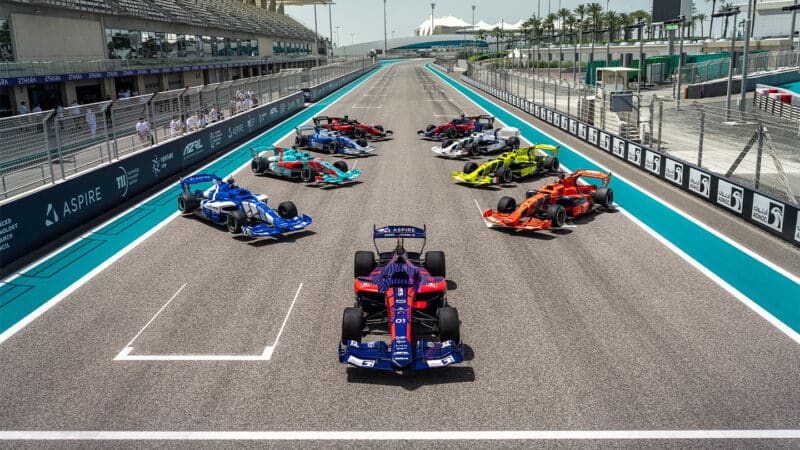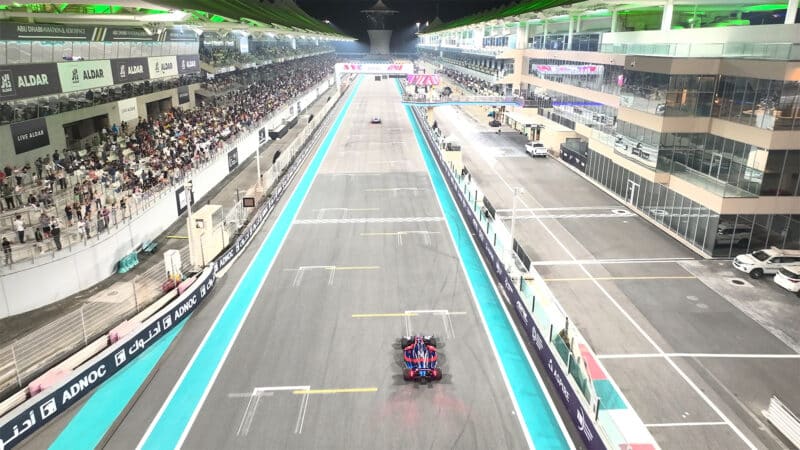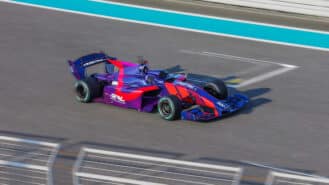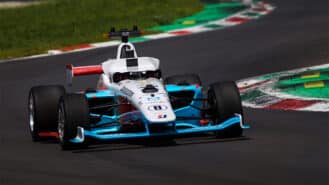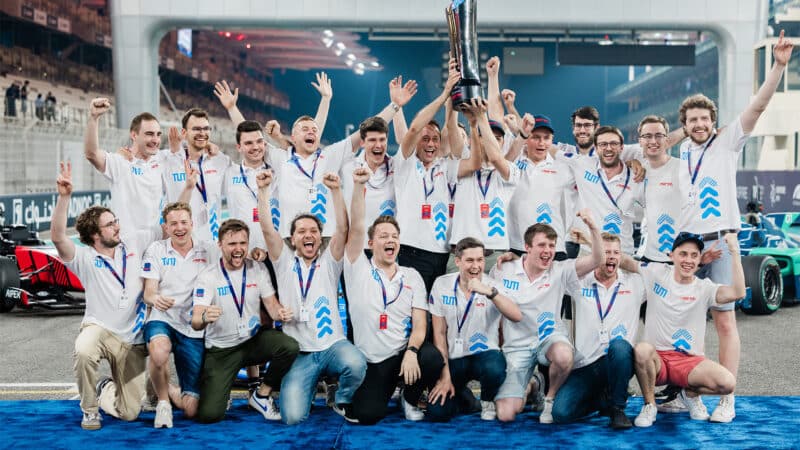While it would be easy to write off the series as a complete failure, what fans didn’t see is the rate of development since teams began testing at the Abu Dhabi circuit.
“I’ve been stunned by the progress they’ve made,” said Tom McCarthy, executive director of operating company ASPIRE. “Last week some of the teams were doing 2min 20sec laps. At the start of this week, they were doing 2min 17sec. By Tuesday, they were at 2min 2sec. And that’s also with a lot of kissing of walls and it had to miss all the kerbs as running over them disturbs the on-board computer.”
The top teams estimate that they are improving their pace by 60% per month — a number which will diminish as the AI reaches the physical capability of the car it’s sat in — and some predict that they’ll be within 1sec of Daniil Kvyat‘s best lap of 1min 47sec, set last weekend in a conventional Super Formula car, by this time in 2025 when the next event is due to take place. However, as Saturday’s event showed, actually racing another car is a different prospect.
A decade ago, Audi demonstrated an RS7 car that could lap Laguna Seca in California by itself. Five years on, Roborace cars were running autonomously around circuits, although the series collapsed before it ever got to running open races. There’s also the Indy Autonomous Challenge where AI cars compete in overtaking tasks.
None have held conventional races, let alone invite the public to watch, and last week seemed to show why.
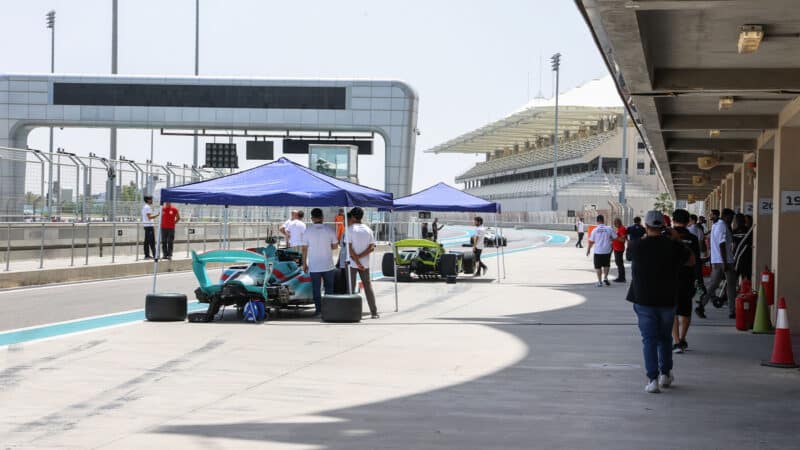
Technology is a constantly improving affair. Autonomous racing cars will be no different
A2RL
Qualifying
The Autonomous Racing League (A2RL) had originally intended to include a field of 10 cars, but soon cut itself down to eight in order to maintain a level of competitiveness.
That was further halved when only four cars were deemed fit enough to race in the final. Qualifying had been split into three different phases over two days: pre-qualifying (a speed trial which ranked teams 1-8), attack/defend (in which each team had to prove they can safely overtake another car — only one did) and a final time trial to determine a final grid order. Italy’s PoliMove team secured pole position, followed by Team TUM (from Germany’s Technical University of Munich) Team Unimore (Italy) and Team Constructor (Germany).
Not all teams escaped the process unscathed, with crashes that everybody felt safe laughing at, given there was no risk of human injury. During Friday practice, the Team Kinetiz car turned into Turn 12 around 10m before the actual corner and crashed straight into the armco on its 30mph out-lap. The following day, during some attack and defence drills, Team TUM did its best Lance Stroll impression by failing to brake entirely and running into the back of Team PoliMove.
After qualifying came the ‘Man vs Machine’ run with a car developed by Abu Dhabi’s Technical Innovation Institute (Team TII) and Kvyat, who has been involved with the programme for months. He helped to train the initial AI software that each team began with and was billed to race against an autonomous machine, but instead followed it for a few laps and then breezed past on the straight.
“I don’t think the exact point of this weekend is to put the car to the complete physical limit,” he said. “The purpose is to bring all these technologies to help humanity. If a car can be controlled [autonomously] at 240km/h (150mph) it can certainly be controlled on the highway at normal road speeds.”
The race
It was the centrepiece of a year’s worth of preparation, and organisers were cautious at this genuine world-first. The four cars in the final trundled down the Yas Marina’s pit straight for three laps behind a safety car before the race went green…. For just six corners before coming to a grinding halt. With cold tyres after the processional laps, the leading PoliMove car locked up and went into a spin, while the trailing Unimore car only narrowly avoided contact. With little racing experience within each team and only an outfit of mechanics shared among the entire paddock, it was almost inevitable that a lack of motor sport knowledge would come back to bite the wheel-to-wheel action. As of now, each car is capable of delivering telemetry back to the pitwall as well as information on tyre temperatures and pressures. The only problem is that teams have not had time to train the AI on what to do with this information — resulting in PoliMove’s first lap spin.
